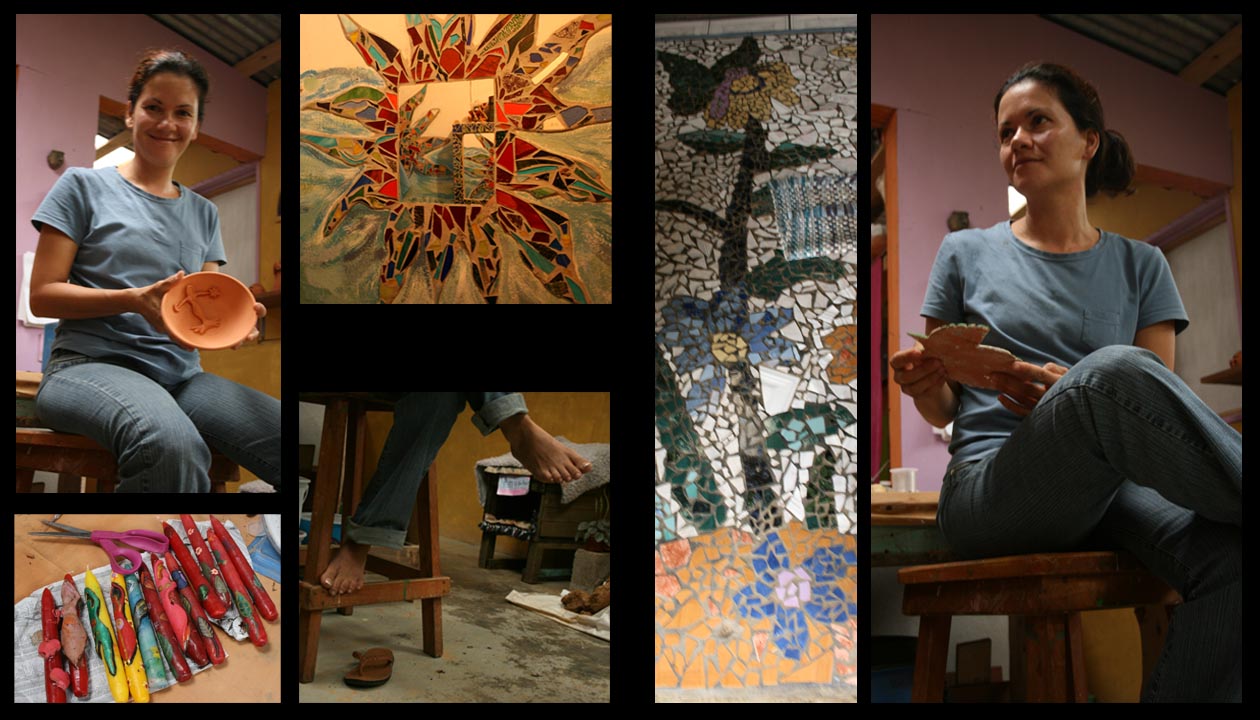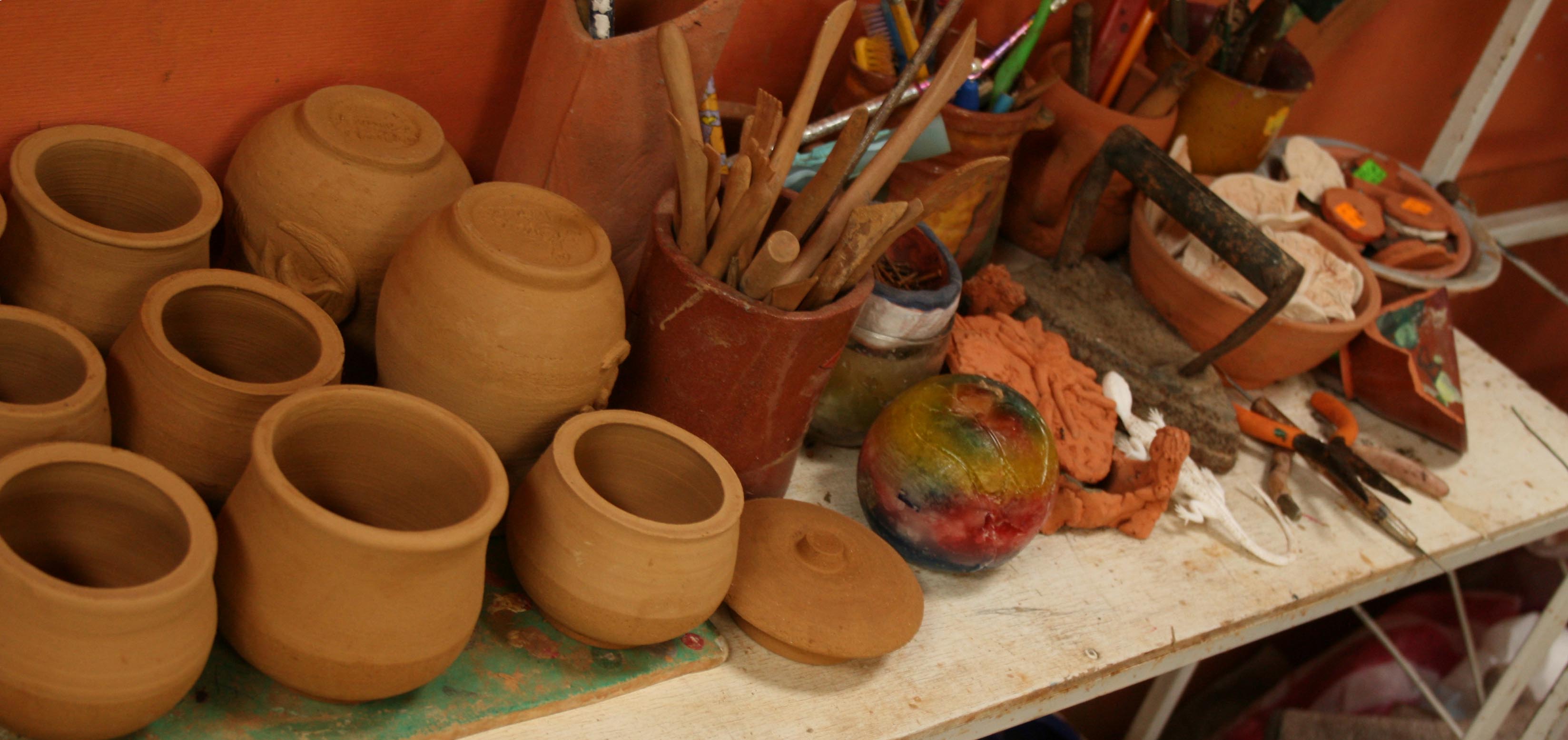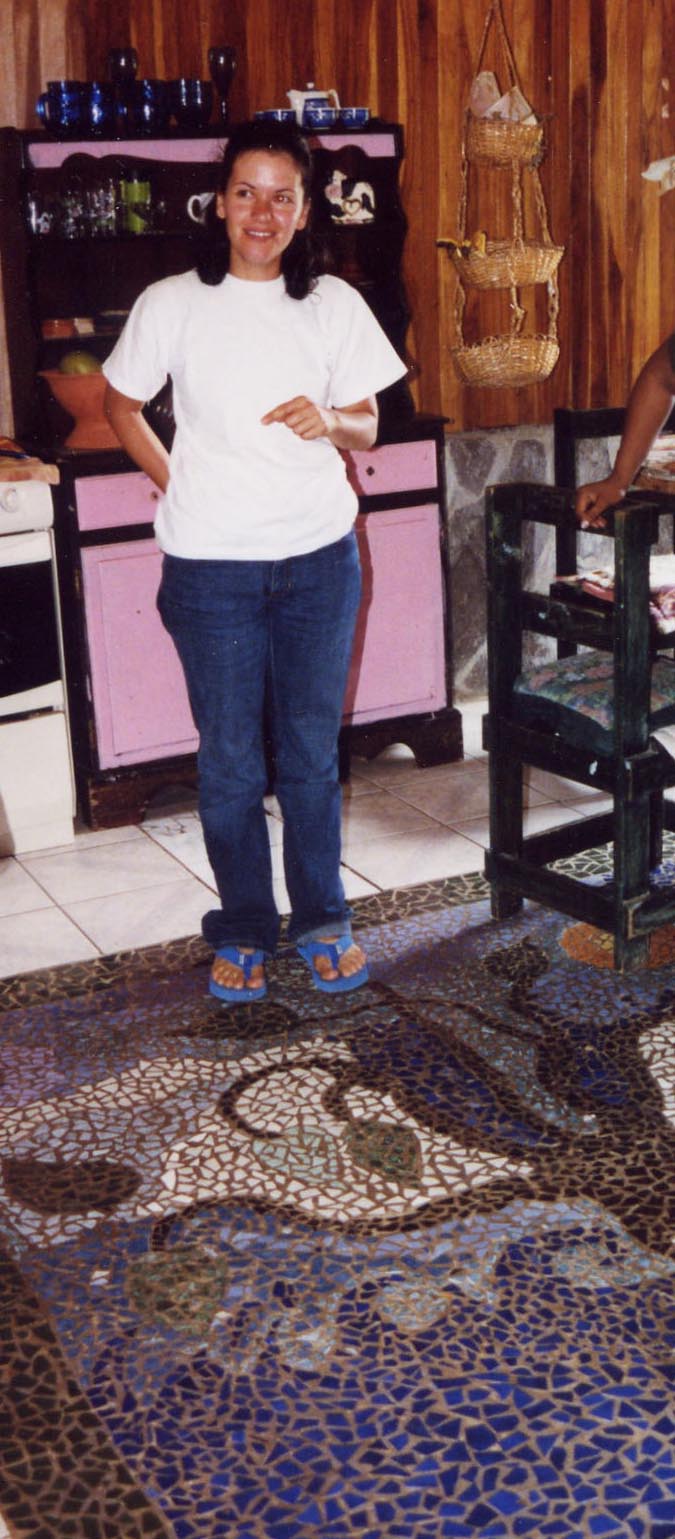Ana Ovares

Written by Lindsay A. Glick and Elizabeth Speigle
Art as a Lifestyle
The red, orange and yellow exterior, which form a sort of welcoming sunrise, are the initial indication that this is, inarguably, the house of an artist. But it is the intricate, vibrantly alive mosaic tree on the kitchen floor, out of which stems an actual tree trunk that reaches up into the painted luscious, green tree canopy on the ceiling, that leaves no room for doubt. For Ana Ovares, the owner and resident artist, this is simply home, one that for visitors is in and of itself as much a work of art as anything Ovares produces in her studio. And while she currently works at home from an adjacent studio, Ovares, like so many women in the Monteverde region of Costa Rica, began her creative work at an early age working through CASEM.
 Born in Monteverde, Ovares began working with CASEM during her final years of high school. She began painting, and continued working with CASEM for thirteen years. When Ovares became pregnant with her first child, she recalls having a flood of creativity, and it was during this time that Ovares ultimately decided to leave CASEM and pursue selling her artwork through different venues. “I decided to resign and open the door to a bigger opportunity,” she said. Women working within CASEM are only allowed to sell their artwork through the organization, and while this arrangement works well for many women who don’t want a full-time artistic career, for others like Ovares it can become a restrictive policy.
Born in Monteverde, Ovares began working with CASEM during her final years of high school. She began painting, and continued working with CASEM for thirteen years. When Ovares became pregnant with her first child, she recalls having a flood of creativity, and it was during this time that Ovares ultimately decided to leave CASEM and pursue selling her artwork through different venues. “I decided to resign and open the door to a bigger opportunity,” she said. Women working within CASEM are only allowed to sell their artwork through the organization, and while this arrangement works well for many women who don’t want a full-time artistic career, for others like Ovares it can become a restrictive policy.
During her time at CASEM, Ovares worked mostly in painting and detailing shirts, bags, books and other items with the bright birds, flowers and plants that have became the characteristic style of CASEM’s work. Towards the end of her time with the group, she also learned how to craft candles and became involved with a North American ceramist at the Monteverde Institute, where she not only helped paint but also create pieces of pottery. It ultimately became too time consuming and difficult for Ovares to continue commuting into town from her home in the quiet mountains, so she and her husband decided to build a studio onto their house out of which she could work.
 Ovares has managed to find balance between creating art and raising three children, and in the meantime has maintained a strong connection with other members of the community. During her early years with CASEM, Ovares was greatly influenced by Patricia Jimenez, one of the founders of the organization, and has maintained this relationship on both an artistic and a personal level. She also enjoys being able to have her own space in which she can work or invite others in to work with her if she chooses.
Ovares has managed to find balance between creating art and raising three children, and in the meantime has maintained a strong connection with other members of the community. During her early years with CASEM, Ovares was greatly influenced by Patricia Jimenez, one of the founders of the organization, and has maintained this relationship on both an artistic and a personal level. She also enjoys being able to have her own space in which she can work or invite others in to work with her if she chooses.
Ovares has also taught Spanish classes at the Monteverde Institute for twelve years. Her desire to help foreign students learn Spanish stems from an experience her senior year of high school. Knowing no English, Ovares went to live with a family in the United States; a family that, unfortunately, also couldn’t speak a bit of Spanish. During her seven months in the States, many of which were filled with frustrating, awkward conversations in a new language, Ovares came to understand the importance of language and became involved with the Monteverde Institute in order to help others. “It was a big opportunity, because I got to know many people and work with so many students,” Ovares says of her time with the Institute. And while she has learned much during her time teaching Spanish and has appreciated the relationships it has allowed her to make, she is stopping in order to focus more fully on her art and expand her creative energies.
Much of Ovares’ work surrounds the concept of energía feminina, or feminine energy. Though she depicts various female themes such as continual changes in the feminine body, Ovares always seems to return to the underlying theme of Gaia, or the concept of Mother Earth and the life force of the universe. With three young daughters, each with wild, flowing black hair like their mother, the feminine energy of the next generation is present as well. The girls really like her work, she says, and love having the opportunity to create their own artistic expressions in the studio as well.
Ovares has been able to allow her business to grow since leaving CASEM, and also has continued to develop as an artist. However, she acknowledges that it was within that group that she was first given an opportunity to explore artistic expression and allow it to influence the course of her life. Though she left CASEM in order to pursue broader sales venues, she has maintained strong connections with the community in which she resides.